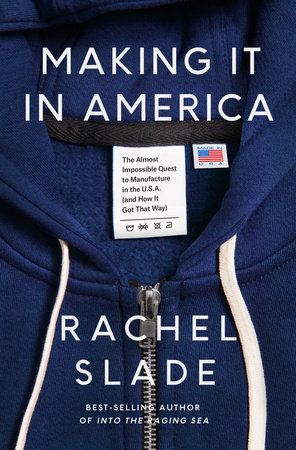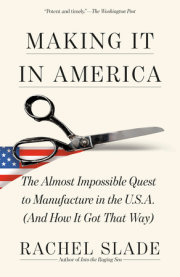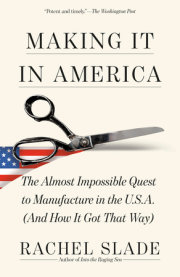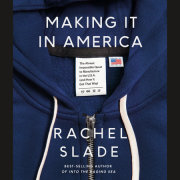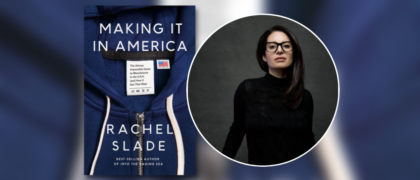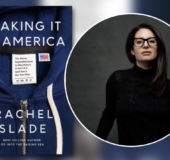MAINE ROOTSOn April 28, 2012, Dory Waxman sat very still at the kitchen table listening to the family van as it climbed the steep driveway and stopped at the barn door. She heard the engine shut off with a resentful knock. At her ankles, the dog whimpered, then sat back on his heels, swishing his tail back and forth across the floor.
Dory took off her reading glasses and tossed them onto the mounting hill of bills, invoices, letters from the city council, school board minutes on the table.
“Well,” she announced to the empty room, “Ben’s back.”
She ground her palms into the table, pushing herself up, wisps of hair slipping free from her loose bun. Wiping her hands on her apron, she maneuvered around the dog, now ecstatic, and swung the storm door into the cool afternoon air while reflexively grabbing the animal’s collar to keep him from leaping into the wet grass.
The storm door’s spring had stretched out forever ago; the door gaped wide and stayed there. The heat of the kitchen rolled out.
Dory studied two of the people she loved most in the world—her husband, Dan, and her oldest son, Ben. Over the past decade, he’d evolved from a skinny redhead in cargo shorts to a sturdy, commanding union man. Dory always wondered what side of the family the red hair came from.
Ben looked up from unloading the van and waved. “Hi, Ma.”
After four months of rehab, Ben looked fit, trim, and tan, healthier than she’d seen him in years. That was the moment she realized he’d been hiding his addiction for a long time.
Ben trudged up the rotting front steps, which sagged under his weight. “One day, someone’s gonna fuckin’ kill themselves on these,” he told her for the thousandth time.
The running joke melted any tension between them. After leaving Maine a decade ago, Ben was home again.
“Well, come in, come in,” Dory said as the dog wriggled at the end of her arm like a fish on a hook.
Ben leaned over the mutt to give Dory a perfunctory peck, wiping his sneakers on the mat. In the kitchen, Dory stood next to Dan in solidarity and gave Ben her best
I’m not worried impression. “I’m good,” Ben said impatiently. Dan reached for Ben’s duffel, but Ben grabbed it and hefted it over his shoulder, then headed upstairs to his boyhood room.
Dory stood listening for the familiar creak of floorboards above them. It was the sound of her boys in her house, under her roof, in her care. But no, this wasn’t right. There was addiction in Dory’s family, and in Dan’s, too. No matter how far you run away from it, it still finds you. Would their oldest find his way out?
She called up to Ben in her resonant alto, “Fresh linens on your bed, Ben. And the shower’s working again. Towels are up there, too.”
Dan and Dory Waxman knew that life was a journey full of false starts and dead ends. The trick was to keep going. They’d met in Boston in the mid-1970s—two free spirits, bound together by their sense of justice. Dan had a mass of black curls and a handsome cleft chin. Dory was a blond-haired, blue-eyed, farm girl from central Massachusetts. Dan dreamed of becoming a professional musician and dropped out of the University of Delaware to immerse himself in Boston’s folk rock and jazz scene. Dory was energetic and independent, eager for adventure. She didn’t bother with college. Her father had worked in a factory; her mother had been a nurse. She’d moved to Boston to build a life for herself.
Dory was one of those New Englanders whose roots go “all the way back to the
Mayflower,” she’d say, which was local shorthand for “We’ve been here a while.” Her grandfather, a Harvard man, won Olympic gold in the high jump. Her grandmother came from Wales. Some close family members struggled with alcoholism and mental illness.
She viewed her heritage with a mix of pride and sadness.
Dan’s family embodied the Eastern European Jewish immigrant experience. His father’s mother had escaped the pogroms in Odessa, Russia, to raise five children in Wilmington, Delaware. She never learned to read or write. Dan’s grandfather had been a professional boxer who fought in the early twentieth century under a pseudonym to hide his Jewish roots. Later, he became an officer in the U.S. Army. Dan’s maternal grandfather founded a dry-cleaning business in Wilmington in the 1930s, which exists to this day. Dan’s father enlisted in the Army Air Force during World War II and fought in the Battle of the Bulge, then took over his in-laws’ dry-cleaning business. He loved telling people that Delaware’s young senator, Joe Biden, was a regular customer.
Although Dan and Dory eschewed conventional life, the cult of hard work was in their DNA. They moved to Midcoast Maine so that Dan could study jazz at the University of Maine, Augusta. Earthy and gregarious, Dory hustled to support them both. She gardened, waited tables, and worked as a line cook. It didn’t take long before everyone in town knew her. Like Dory, Dan began building a mile-long CV of odd jobs—dishwasher, busboy, cashier, short-order cook, house painter, a farmhand for haying, a counselor at a tiny residential high school for troubled teens. In the winters, they’d house-sit for wealthy absentee owners in large, drafty “summer cottages” along the coast, waiting out the cold under piles of quilts while keeping out the raccoons and making sure the pipes didn’t freeze.
That he became known around town as “the egg that wouldn’t hatch.” When he finally came out on June 15, 1979, the local newspaper ran a front-page story about him.
That year, Dan and Dory bought a 1965 beige and red VW bus with an engine that would start only when rolling downhill, with one foot working the clutch, another pumping the gas, and one hand gripping the emergency brake. If they couldn’t find a hill to park it on, they’d have to crawl underneath and cross the solenoid. Ben’s brother, Adam, arrived a year later.
Throughout the Reagan years, when much of America was embracing Ralph Lauren and free trade, Dory and Dan held tightly to their progressive beliefs. Maine was a refuge for idealists like them. Utopian fervor was a northern Yankee tradition. It spanned across the centuries and across the political spectrum—from celibate Shakers to right-wing libertarians and doomsday preppers. Countless descendants of the self-righteous Protestants who’d fled England in the seventeenth century still lived in the Maine woods, alongside back-to-the-land types, artists, and writers. Maine was big enough (and rural enough and cheap enough) that someone could even slip off the grid, like Christopher Thomas Knight, the so-called North Pond Hermit, who survived alone in the woods for twenty-seven years until he was arrested in 2013 for multiple burglaries.
In 1983, Dan began selling ads for
Farmstead Magazine, a homespun-looking stapled affair founded a few years earlier. The magazine was geared toward the new crop of back-to-the-landers arriving in Maine. The cover of the first issue, published in 1974, featured a woodcut of a farmer riding a plow drawn by two muscular horses, their heads bending elegantly toward each other, forming the shape of a heart. Stories included a Maine planting calendar; a feature called “You Can Raise Turkeys”; something about E. B. White; and “Helen Nearing’s Rosehip Recipes.”
Helen and Scott Nearing had fled the cacophony of their native New York City to rural Vermont forty years earlier, and resettled on a saltwater farm in Midcoast Maine in the 1950s when the skiing craze made Vermont too popular for their taste. Throughout their long lives (Scott died at one hundred; Helen lived to age ninety-one), the Nearings published dozens of books about the farming life, guiding others in the art and craft of rural self-sufficiency. They described themselves as part of a movement stretching back to the first European settlers in New England—people who, they wrote, were like “the many young people of today who find no satisfactory way to exercise or develop their talents and interests in modern city or suburb.”
Dan and Dory had been drawn to the Maine life the Nearings wrote about. Cult heroes to the end, they romanticized one version of American bootstrapping—not the suburban postwar version, something more akin to an updated version of colonial homesteading.
After World War I, which thrust the U.S. onto the international stage, Americans spent a lot of time thinking about who they were and building a narrative to fit their new superpower status. In the 1920s, John D. Rockefeller Jr. bought an entire Virginia town with a multitude of dilapidated colonial-era buildings. His enormous, decades-long restoration of Williamsburg fired up Americans’ imaginations. Museums around the country opened “period rooms” rife with Chippendale chairs and Paul Revere serving pieces; the heirs of DuPont Chemical filled their Delaware estate, Winterthur, with 90,000 American antiques and opened it as a museum in 1951. Americans went crazy for colonial-style home design and furnishings, triggering a demand for domestic cabinetmakers and other craftspeople.
The Nearings encouraged their followers to go beyond the aesthetic and embrace the colonial pioneer mindset. They taught them how to clear their own land, build their own homes, dig and cultivate their own gardens, and survive by the sweat of their brows.
Native Mainers may have chuckled at the Nearings for making life harder for themselves, but the promise of honest reward for hard work attracted generations of people searching for a more authentic life. (It was later reported that while the Nearings certainly worked hard, they could not have supported themselves without their sizable inheritances.) Heavily subsidized or not, the Nearings lived one version of the American dream—a life based on rising early, soil-tilling, beekeeping, and animal husbandry.
To the children of suburbia who questioned their privilege and yearned for a stronger connection to the earth, there was honor in that.
Copyright © 2024 by Rachel Slade. All rights reserved. No part of this excerpt may be reproduced or reprinted without permission in writing from the publisher.

